There are pieces here that replies/comments prior to this are enforced e.g. use parameters.
There are comments sprinkled throughout the code but a few things first.
It's a good idea to separate user interface from data operations thus the code below is a class which in the form an instance of the class is created, calling the AddNewRecord and passing back the newly created record's primary key.
Note how I created the SQL statement, much better than concatenating strings which is good for Framework 3.5 or higher.
Hope this helps.
Imports System.Data.SqlClient
''' <summary>
''' Created with Framework 4.5 under
''' VS2015
''' </summary>
Public Class DataOperations
Private Server As String = "DESKTOP - KBTD2C1 \ MYDATABASE"
Private Catalog As String = "MyDatabse"
Private ConnectionString As String = ""
Private mException As Exception
''' <summary>
''' If AddNewRecord returns false check this for
''' the exception thrown.
''' </summary>
''' <returns></returns>
Public ReadOnly Property Exception As Exception
Get
Return mException
End Get
End Property
''' <summary>
''' Setup the connection string
''' </summary>
Public Sub New()
ConnectionString = $"Data Source={Server};Initial Catalog={Catalog};Integrated Security=True"
End Sub
''' <summary>
''' I don't know you data types for fields, last one
''' seemed like a date so I cast the arguments in as string
''' exception for the last one.
'''
''' Example call would be to pass in your values. Last argument
''' pass in a defined Integer e.g. Dim Id As Integer = 0
''' If this function returns true then the variable Id will contain
''' the new primary key value for the newly created record.
''' </summary>
''' <param name="adresseClient"></param>
''' <param name="villeClient"></param>
''' <param name="cpClient"></param>
''' <param name="telClient"></param>
''' <param name="identClient"></param>
''' <param name="nomEntreprise"></param>
''' <param name="secteurEntreprise"></param>
''' <param name="dateCreationEntreprise"></param>
''' <param name="NewIdentifier"></param>
''' <returns></returns>
Public Function AddNewRecord(
ByVal adresseClient As String,
ByVal villeClient As String,
ByVal cpClient As String,
ByVal telClient As String,
ByVal identClient As String,
ByVal nomEntreprise As String,
ByVal secteurEntreprise As String,
ByVal dateCreationEntreprise As Date,
ByRef NewIdentifier As Integer) As Boolean
Using cn As New SqlConnection With {.ConnectionString = ConnectionString}
Using cmd As New SqlCommand With {.Connection = cn}
'
' INSERT record then get the record's newly generated primary key
' (assuming the primary key is auto-incrementing int)
'
cmd.CommandText =
<SQL>
INSERT INTO Entreprise
(
adresseClient,
villeClient,
cpClient,
telClient,
identClient,
nomEntreprise,
secteurEntreprise,
dateCreationEntreprise
)
VALUES
(
@adresseClient,
@villeClient,
@cpClient,
@telClient,
@identClient,
@nomEntreprise,
@secteurEntreprise,
@dateCreationEntreprise
);
SELECT CAST(scope_identity() AS int);
</SQL>.Value
cmd.Parameters.AddWithValue("@adresseClient", adresseClient)
cmd.Parameters.AddWithValue("@villeClient", villeClient)
cmd.Parameters.AddWithValue("@cpClient", cpClient)
cmd.Parameters.AddWithValue("@telClient", telClient)
cmd.Parameters.AddWithValue("@identClient", identClient)
cmd.Parameters.AddWithValue("@nomEntreprise", nomEntreprise)
cmd.Parameters.AddWithValue("@secteurEntreprise", secteurEntreprise)
cmd.Parameters.AddWithValue("@dateCreationEntreprise", dateCreationEntreprise)
Try
cn.Open()
NewIdentifier = CInt(cmd.ExecuteScalar)
Return True
Catch ex As Exception
mException = ex
Return False
End Try
End Using
End Using
End Function
End Class
EDIT: Mock up of usage
Public Class example
Private dt As DataTable
Public Sub New()
dt = New DataTable
dt.Columns.Add(New DataColumn With {.ColumnName = "id", .DataType = GetType(Integer), .AutoIncrement = True})
dt.Columns.Add(New DataColumn With {.ColumnName = "adresseClient", .DataType = GetType(String)})
dt.Columns.Add(New DataColumn With {.ColumnName = "villeClient", .DataType = GetType(String)})
dt.Columns.Add(New DataColumn With {.ColumnName = "cpClient", .DataType = GetType(String)})
dt.Columns.Add(New DataColumn With {.ColumnName = "telClient", .DataType = GetType(String)})
dt.Columns.Add(New DataColumn With {.ColumnName = "identClient", .DataType = GetType(String)})
dt.Columns.Add(New DataColumn With {.ColumnName = "nomEntreprise", .DataType = GetType(String)})
dt.Columns.Add(New DataColumn With {.ColumnName = "secteurEntreprise", .DataType = GetType(String)})
dt.Columns.Add(New DataColumn With {.ColumnName = "dateCreationEntreprise", .DataType = GetType(Date)})
End Sub
Public Sub demo()
Dim ops As New DataOperations
Dim id As Integer = 0
If ops.AddNewRecord("sasas", "sdsd", "fgfgf", "wew", "asd", "cvb", "xv", Now, id) Then
dt.Rows.Add(New Object() {id, "sasas", "sdsd", "fgfgf", "wew", "asd", "cvb", "xv", Now})
End If
End Sub
End Class

